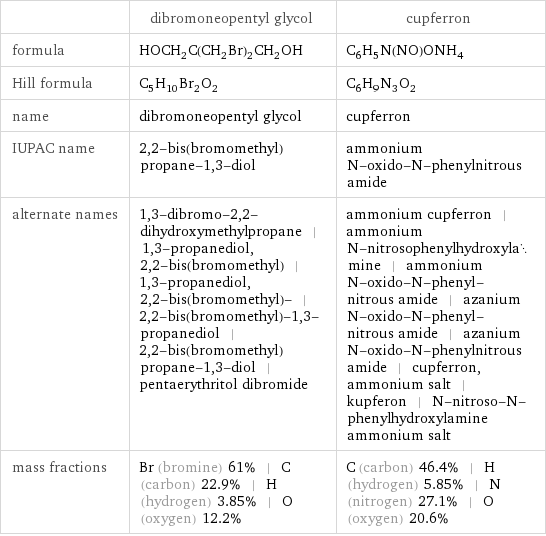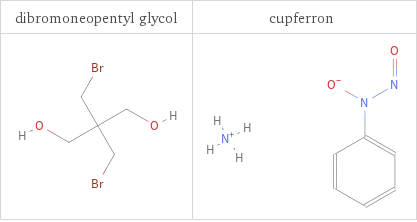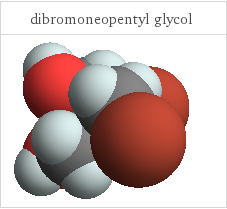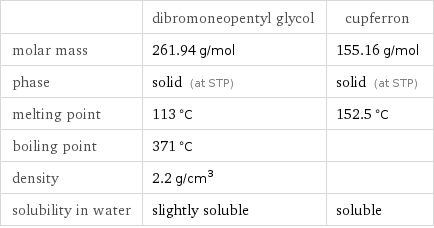Input interpretation

dibromoneopentyl glycol | cupferron
Chemical names and formulas

| dibromoneopentyl glycol | cupferron formula | HOCH_2C(CH_2Br)_2CH_2OH | C_6H_5N(NO)ONH_4 Hill formula | C_5H_10Br_2O_2 | C_6H_9N_3O_2 name | dibromoneopentyl glycol | cupferron IUPAC name | 2, 2-bis(bromomethyl)propane-1, 3-diol | ammonium N-oxido-N-phenylnitrous amide alternate names | 1, 3-dibromo-2, 2-dihydroxymethylpropane | 1, 3-propanediol, 2, 2-bis(bromomethyl) | 1, 3-propanediol, 2, 2-bis(bromomethyl)- | 2, 2-bis(bromomethyl)-1, 3-propanediol | 2, 2-bis(bromomethyl)propane-1, 3-diol | pentaerythritol dibromide | ammonium cupferron | ammonium N-nitrosophenylhydroxylamine | ammonium N-oxido-N-phenyl-nitrous amide | azanium N-oxido-N-phenyl-nitrous amide | azanium N-oxido-N-phenylnitrous amide | cupferron, ammonium salt | kupferon | N-nitroso-N-phenylhydroxylamine ammonium salt mass fractions | Br (bromine) 61% | C (carbon) 22.9% | H (hydrogen) 3.85% | O (oxygen) 12.2% | C (carbon) 46.4% | H (hydrogen) 5.85% | N (nitrogen) 27.1% | O (oxygen) 20.6%
Structure diagrams

Structure diagrams
3D structure

3D structure
Basic properties

| dibromoneopentyl glycol | cupferron molar mass | 261.94 g/mol | 155.16 g/mol phase | solid (at STP) | solid (at STP) melting point | 113 °C | 152.5 °C boiling point | 371 °C | density | 2.2 g/cm^3 | solubility in water | slightly soluble | soluble
Units
